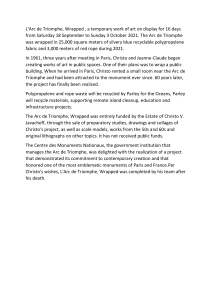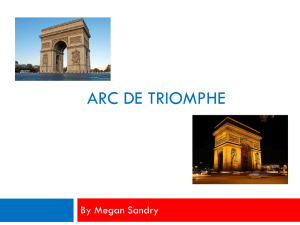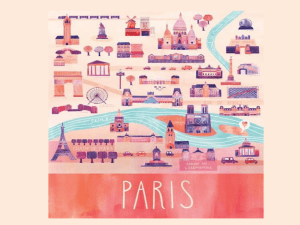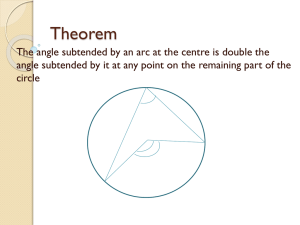Pictures Location History/Culture
advertisement
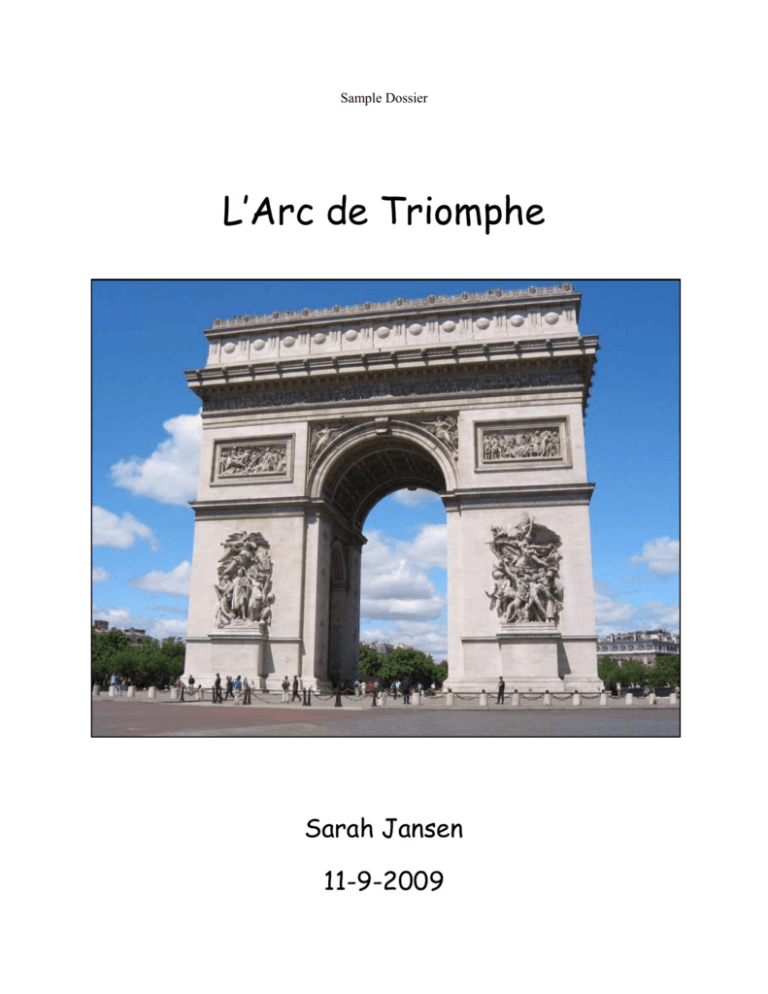
Sample Dossier L’Arc de Triomphe Sarah Jansen 11-9-2009 Pictures Location History/Culture Napoleon I ordered the Arc de Triomphe to be built in 1806. But, it took 30 years to be completed. It was finished in 1836 and inaugurated by the French King Louis-Philippe. He dedicated it to the Armies of the Revolution and of the Empire. There are engravings and reliefs on the Arc of major military victories from the Napoleonic and Revolutionary periods as well as names of generals and soldiers. The original architect was Jean-François Chalgrin. In 1921, the Unknown Soldier of France was buried under the arch. There is a flame of remembrance that always burns near the memorial. It commemorates the Unknown Soldier and all soldiers that died in the two World Wars. The French national holiday is July 14. On this day, there is a military parade that always begins at the Arc de Triomphe. On Armistice Day, November 11, the President of France lays a wreath on the tomb of the Unknown Soldier. On other important state occasions and holidays, a huge French flag is hung from the ceiling inside the Arc (see the middle picture). Appearance The Arc de Triomphe is a huge arch that sits in the middle of a roundabout at the opposite end of the Champs Elysées from the Louvre. It is 164 feet high. There are many intricate sculptures and reliefs on the Arc de Triomphe that commemorate military victories and French generals and soldiers. What’s inside? There are 234 steps that visitors can climb to the top of the Arc. There is a museum dedicated to the Arc’s history and construction, and also a small gift shop. Why visit? The Arc de Triomphe is an amazing monument. Up close, its size is colossal and its sculptures and reliefs are incredible. It is a true testament to French architecture, workmanship, and determination. This monument is very rich in French culture and one of the most famous symbols of Paris, after the Eiffel Tower. Finally, the panoramic views of Paris from the top of the Arc de Triomphe are amazing. Visitors can see the Eiffel Tower, Les Invalides, and the entire Champs Elysées all the way down to les Tuileries and le Louvre. Resources http://www.paris.org/Monuments/Arc/ http://arc-de-triomphe.monuments-nationaux.fr/en/ http://www.aviewoncities.com/buildings/paris/arcdetriomphe.htm

